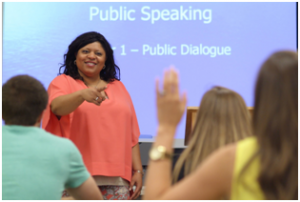Engage your students more by identifying the key obstacles to classroom participation and how to get around them.
 The second half of the school year can be a tricky one. The closer summer break gets, the less engaged are the students. Helping students participate in class helps them stay present and focused on the material. In part 1, we covered the first two common obstacles to student participation: repetitive content and difficult content. Here are the remaining two.
The second half of the school year can be a tricky one. The closer summer break gets, the less engaged are the students. Helping students participate in class helps them stay present and focused on the material. In part 1, we covered the first two common obstacles to student participation: repetitive content and difficult content. Here are the remaining two.
Too much to present in too little time.
You face this all the time. There is a lot of information you need to deliver, yet not enough time to do it. The solution is usually lecturing, but you’re trading quantity of content for quality of learning.
- Deliver in nuggets. The general rule of thumb with lecturing is that you should break after every 10-15 minutes of talking. In the break, have the students do an activity to give life to the information.
- Make the information itself an activity. We’ve all received lecture notes with key words and phrases missing – it helps students stay focused on the material. There are a couple other ways to do this. Lecture BINGO is a really fun one. Alternately, you can tell the students your lecture topic and ask them to write down predictions about what you’ll say. You can give them a true/false quiz about the info, and they can check it as they go. Have them write out any questions they have, too. After the lecture, ask how they fared in their predictions and what questions they have left.
The lesson revolves more around the teacher than the students.
You stand at the front of the classroom explaining material, and students take notes. This is the traditional method of teaching we all know. This puts more emphasis on you than them, however.
- Let activities and each other be the instructor. Switch around the traditional roles of classroom versus homework. Give them reading or video content to become familiar with the lesson content as homework. In their next class, give them activities and/or group work to practice using the information they received. You, of course, will supervise and help explain material along the way. However, the students will be able to fill in a lot of blanks for one another and take learning to a more personal level.
- Give the students more power. Ask them what methods of learning they like best, and give them more of those activities. Create a few options for them when it comes to point systems, homework, class activities, etc, and have them vote on what they think is most fair or exciting. They will invest more focus in a class that they feel they have shaped.
Obviously, no solution will engage 100% of your students. Each suggestion will go over differently in each class you have, too. If you can be fluid and experimental in your lesson plans, though, your students will reward you for your efforts.
For presentation materials, sheet protectors, badge holders, and other plastic school supplies, Vinyl Art has everything you need. We’re a Minnesota company that serves schools across the nation. We have standard materials and also eco-friendly options. Call 800-569-1304 or email sales@vinylart.wpengine.com.

